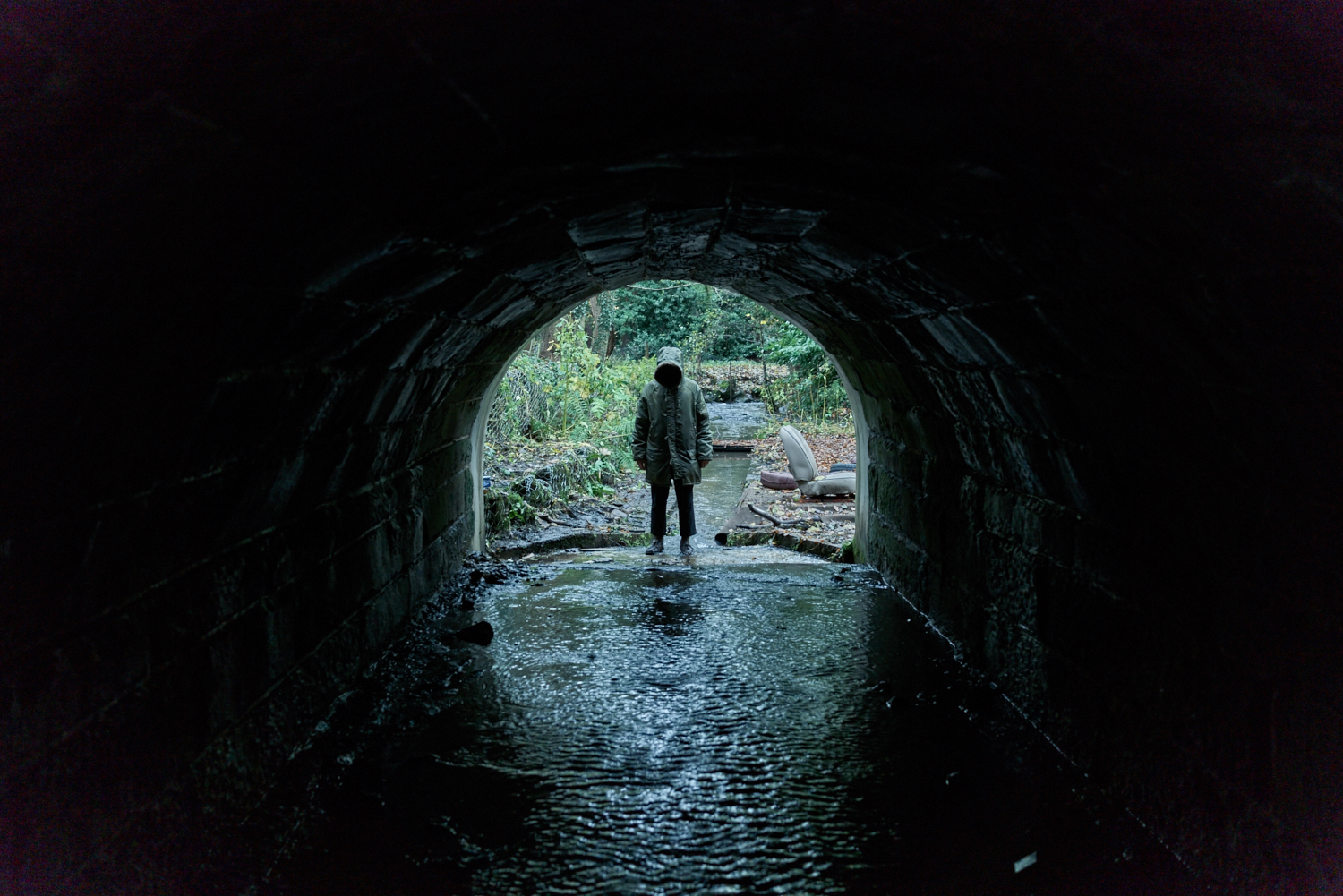
“The Brain Sees What It Wants to See.” So goes the poster tagline for Jeremy Dyson and Andy Nyman’s film, Ghost Stories. Watching the film, it takes a while to figure out just what it means, but once it clicks, the film becomes one of the most rewarding horror anthologies to come along in ages.

For every Southbound or Trick ‘r Treat the last few years, rewarding viewers with intertwining stories and plots, there are myriad films such as Tales of Halloween or Holidays which merely present a series of shorts around a theme, feebly connecting them via some ridiculous narrative device which fails more frequently than it succeeds. The plot summary for Ghost Stories is as follows:
“A debunker of all things paranormal, Professor Phillip Goodman (Andy Nyman) has devoted his life to exposing phony psychics and fraudulent supernatural shenanigans on his own television show. His skepticism is put to the test, however, when he receives a file of three chilling, inexplicable cases: a night watchman (Paul Whitehouse) haunted by disturbing visions as he patrols an abandoned asylum; an edgy young man (Black Mirror’s Alex Lawther) involved in a hellish car accident deep in the woods; and a wealthy former banker (Black Panther’s Martin Freeman) visited by the poltergeist spirit of his unborn child. Even scarier: each of the these macabre stories seems to have a sinister connection to Professor Goodman’s own life. Will they make a believer of him yet?”
Based on Dyson and Nyman’s play, which debuted in 2010, the film does a very good job of moving past its stage roots. The settings move beyond closed rooms and the like into wide-open fields and forests, as well as a rambling old former asylum. The only segments which bely the Stories’ origins are when each of the three case studies begin to tell their tales, as they’re granted these big, meaty monologues. It’s definitely a theatrical conceit, but works well within the confines of the plot, wherein Goodman is trying to find out from these people just what happened, in their own words.
Of the three main story segments, the first one — Tony Matthews, the night watchman — is the strongest, as it is the one which has the greatest amount of possibility behind it. We’re never quite certain as to whether or not Matthews simply went mad late at night in creepy surroundings, or if something did in fact happen to him, and it’s all the more successful for it.

This is due in no small part to effective use of location, as abandoned buildings strewn with detritus are always ace in terms of developing creepy atmosphere. Throw in Anthony Newley’s “Why” echoing throughout the darkened hallways and rooms of the former asylum (“I’ll never let you go/ Why? Because I love you”) and it’s A+ jump-scare territory from the moment Matthews begins his story with the line, “That place had a history — none of it was nice.”
The latter two segments are scary and uncomfortable, to be sure, and Lawther as teenager Simon Rifkind is excellently teenage, all twitching and nervous laughter, and Martin Freeman does his unsurprisingly superb straight-talking character yet again. In particular, Freeman as Mike Priddle delivers a reading of the line, “Do you believe in evil, professor? I didn’t, until that night,” which is so matter-of-fact that it sent chills down my spine.

Their tales, however — while eerie — never manage to meet the pure, cringing terror of the Matthews portion which kicks off Ghost Stories. It’s in part due to the fact that they’re far more explicitly supernatural, lending little doubt to the fact that whatever may be happening, it’s from a realm which is definitely not one with which Professor Goodman is familiar.
The latter tales are also impeded by some overly-enthusiastic foley work which begins in the first segment, but begins to grate about halfway through Rifkind’s story. Cigarettes burning, people walking, scratching at clothing — it’s all played at such a volume that one imagines they’ve accidentally cranked the volume on their television far too loud, somehow.
Then — well, things begin to take a turn, and that’s as far as I’m willing to go with that. Suffice it to say, those who pay attention throughout the film will be rewarded richly, and those who did not will definitely need a second viewing in order to really clue in to what Ghost Stories has to offer.
Dyson and Nyman’s Ghost Stories is a fantastically unnerving film, and even my wife — who came in and out of the film over the course of its runtime — found herself disconcerted, but unable to stop watching when she found herself in the room. It’s made all the more disturbing by the score from Israeli/German composer, Frank Ilfman, whose music works in the sort of haunted / possessed vein I most frequently associate with Fred Mollin’s work on Friday the 13th: The Series, but with an actual orchestra and better synths.
The score album itself could be an absolute nightmare. The Varèse Sarabande soundtrack features dialogue from the film between some cuts, and on its own, it’s disturbing, but those who’ve seen the film will find themselves holding tense as Ilfman’s music plays out. It only goes to prove just how effective Ghost Stories ends up being, even divorced from the visuals, which are a study in use of darkness, angles, shadows, and how effective a proper long shot can be.
TL;DR: Go see Ghost Stories and be creeped the hell out in a way which will surprise you.





1 Comment
Comments are closed.